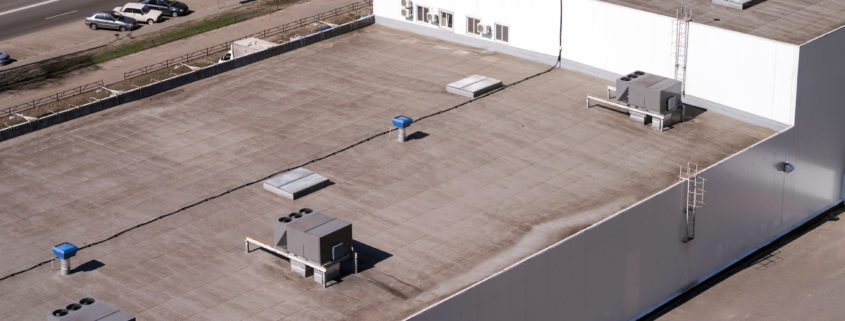Construction projects are designed, completed and carried out in a variety of ways. And, typically, the project owner chooses the method in which construction and design will be carried out, whether it’s a traditional method or design-build. While each option has its benefits, the design-build method is a type of project delivery that is by far the most popular in the United States.
To better understand this method and why it is the go-to option for most companies, let’s take a look at what design build entails.
The Design-Build Process
When looking to decrease costs and speed up delivery during the construction process, many professionals in the industry look to the design-build methodology to complete the project without sacrificing high-quality work, all within a manageable timeframe.
Design
At the start of a design-build project, the project owner hires a company to design their project according to their specifications. This is a design phase. The designer is expected to complete every aspect of the design work and edit that work accordingly (while maintaining constant contact with the construction team).
Build
Once the terms of the contract are settled, the construction phase can begin. With design-build, the obligation and risk are all placed on the original contractor. So, if the project is not complete (or should something go wrong), that original contractor is held responsible.
Types of Design-Build Projects
When looking at which design method to utilize for your project, one must take into consideration how the design-build method saves both time and money. This is used for large commercial and industrial projects, including roofing, but also new homes and residential design projects as well. There’s a general contractor who handles build services. This includes the owner overseeing project managers and subcontractors (also full-service).
Public Projects
Years ago, the design-build process was not the method of choice for public projects. However, the design-builder model’s popularity has grown considerably in recent years. All of the project costs are out front. There are no hidden expenses, and the project can move through the build process from designing to engineering and build contractors to subcontractors, without delay.
Private Projects
One of the biggest perks of the design-build method (when it comes to the private sector) is that the project owner has one point of contact for all questions – whether related to design or construction. This gives the customer more control over their project while not having to communicate through multiple channels.
Other Types of Project Deliveries
Design build is one of several project delivery systems. We’ll break down two others: design-bid-build (DBB) and construction management.
Design-Bid-Build
Competitive bidding, when a project is announced and construction companies organize a proposal for procurement. This is also known as design-bid-build. Separate contracts from each project team ensure specialized relationships with the project owner, and there is lots of communication between different parties.
Construction Management
In this project delivery method, the project owner hires a construction manager to handle the entire project, from designing to the end of construction. There’s a guaranteed maximum price (GMP) set during the bidding stage.
Risks and Rewards of Design-Build
Overall, design-build is the most popular method for construction project completion. Like everything else in life, however, not everyone agrees with the data.
Critics of the design-build method claim that the process sets the stage for contractors to make decisions outside their area of expertise, while proponents counter that design-build brings value of hands-on engineering into the design process at the onset of a project, creating a teamwork element.
In fact, one major reward from using design-build is the fact that both the construction services and design services are on the same team. And, oftentimes, contractors have valuable input when it comes to potential flaws in design or process.
With the design-build method, contractors are teamed with the designer so that potential issues can be flushed out faster. Being flexible and allowing your contractors to have input during the design can help alleviate issues arising after the design has been finalized.
Design-Build for Commercial Roofing
Design-build isn’t just easier—it’s better. It streamlines the commercial roofing process; you sign one contract and have one point of contact from start to end. With a single-source design-build team, solutions to your roofing problems are addressed quickly and without conflict. In fact, in comparison to the traditional design-bid-build delivery method, design-build speeds delivery by about 33.5%.
At TEMA Roofing Services, our decades of experience give us the insight to understand that no roofing project is “standard.” Change can—and will—happen. By using the design-build construction approach, we anticipate possible change-orders from the outset of design discussions, issuing one solid contract price to our clients.
In addition, because there is a single contract with design-build firms, you don’t have to involve outside architects or engineers (or worry about the fees and delays associated with their conceptual plans). This lengthens the process and lessens cost savings as they put their designs out to bid with document preparation, pre-bid meetings, contract selection, negotiation and so on.
Commercial Roofing Project Completion
There are always risks when it comes to starting a new project, and there are very few instances when a project runs perfectly from start to finish. But, the design-build process has been tested and tried over hundreds of years (if not THOUSANDS of years) in the construction industry and remains such a trusted process because the rewards heavily outweigh the risks.
Design-build allows for construction to begin immediately after plans are approved (because the designer and contractor are a team). This time-saving aspect is one of the biggest draws of this particular method, and at the end of the day, every project owner’s goal is to complete the project on time and within budget.
For more details on how we can help with your next construction project, visit our website or give us a call at (330) 272-0988 for more information.





